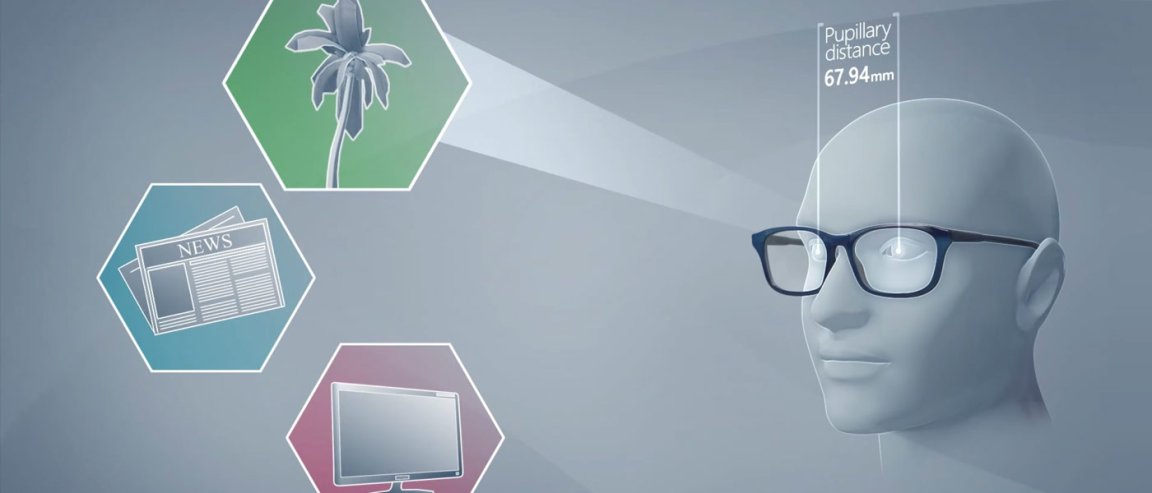
ADJUSTING FOCUS
A significant part of the human population wears glasses (or will need to wear them in the future). Most glasses or bifocals have a maximum of two focuses, one for each lens. This has been the way of things for ages. But although glasses have generally been unchanging, Israeli company Deep Optics is trying to bring on a new technological revolution, one where a lens is able to adjust focus on the go, making bifocals into “omnifocals.”
These lenses are able to change their optical properties in real time to allow the wearer to look wherever they want without affecting their field of view or clarity.
The lens accomplishes this by adding a layer of transparent liquid crystal onto the lens. This liquid layer is able to adjust the refractive index (which measures the capacity to bend light) of the lens. And in effect, it changes the focus of the glasses depending on the distance of the object being viewed.
FROM GLASSES TO VR

Sensors within the glasses track where the wearer is looking by measuring pupillary distance, the distance between the centers of the two pupils. Through this measurement, the sensors are able to gauge the depth of the object that the wearer is focusing on and pass this information to a processing unit which determines the needed adjustments. The unit then passes an electric current through the liquid-crystal layer to produce the needed focus.
While liquid optics technology may eliminate future appointments to the eye doctor for adjustments, this tech has seen more use in smartphone camera lenses. Deep Optics foresees the possibility of applying the technology en masse to revolutionize glasses.
Indeed, the lenses may solve the problem of disorientation in virtual reality. By adapting the lens to VR use, it could allow people to observe 3-D images on a relatively flat display without experiencing nausea.
In an interview with Technology Review, Deep Optics CEO Yariv Haddad indicated that these glasses could seamlessly adjust focus between varying distances, allowing a user to look at a distant object then a nearby object without losing clear vision or needing manual adjustment. “The user doesn’t have to control it, doesn’t have to look through a specific area of the lens. [They] just have to look through the glasses as they would with any glasses prior to that,” he says.
The company has yet to proceed to commercial development, as they are trying to perfect the lenses and solve the remaining technical challenges. Currently, they are trying to shrink all the electronic components such that it could fit in a regular pair of glasses. Haddad hopes that their omnifocals will be ready in two years.